
OTTAWA — Poverty has long weighed on Hugh Segal’s mind. For decades, the former senator has been a vocal champion for a guaranteed basic income to lift the country’s poorest out of the cycle of poverty. He credits his formative years, growing up in an immigrant family in Montreal’s working-class Plateau neighbourhood, for sowing the seeds of his advocacy.
“What bothers me the most about [poverty] is the amount of people whose lives are being wasted because they’re caught in a scramble of too many jobs, too little pay, insufficient resources to cover rent, food, transport, clothes,” he said, in an interview. “Their kids pay a huge price, and it produces all kinds of difficulties.”
Poverty doesn’t affect only low-income earners, he added. To illustrate his point, the former chief of staff to Brian Mulroney shared an anecdote about the cost of preventable illnesses to a public health-care system. He called it “the $1,007 sandwich and bowl of soup.”
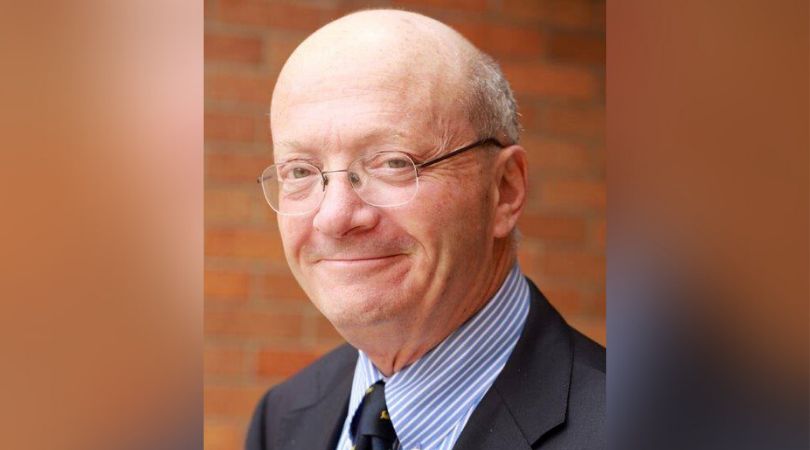
The story goes that researchers at a Toronto hospital studying population health noticed a trend among some lower-income patients who would show up in the emergency room. The cases seemed to be a chronic illness, but after triage, staff believed what the patient would benefit most from was a bit of advice and a bowl of soup and a sandwich.
“Seven dollars for the hot bowl of soup and sandwich, $1,000 for what it cost to do the triage to figure out what [their] health circumstance was when [they] showed up,” Segal explained. There’s plenty of research to support this, showing low-income people are at a higher risk of diabetes, heart disease and chronic illnesses than Canada’s richest 20 per cent. Segal’s point is clear: When people don’t have resources, they don’t have resilience — and that affects everyone.
* * *
I spoke to Segal at the end of February. Two weeks later, on March 11, the World Health Organization declared the COVID-19 outbreak a pandemic. Stories from overworked Italian doctors warned the world to move past nationwide nonchalance and take preventative measures seriously. In less than three weeks, the highly contagious respiratory disease had stretched that country’s health system beyond its limits, bringing it to its knees.
On March 12, the NBA suspended the rest of its season after a player tested positive for COVID-19. That same evening, Prime Minister Justin Trudeau’s wife, Sophie Grégoire Trudeau, was diagnosed with the disease after developing flu-like symptoms days after speaking at a high-profile London, U.K., arena event. Actor Idris Elba also tested positive, after posing for a picture with her there.

By the end of the week, office workers were being told to work from home on the advice of health officials. Panicked shoppers cleaned out toilet paper and pasta from grocery store shelves. Social distancing became a ubiquitous term overnight. One by one, municipalities and provinces declared states of emergency. Health workers urged us to #FlattenTheCurve. Countries around the world announced border closures and restrictions on non-essential travel. We’ve been told to cancel dinner plans with family and friends and to move them online. Stores, restaurants and bars began to announce temporary shutdowns on their Instagram pages. Then workers, particularly those in the tourism, travel and hospitality industries, started getting laid off.
“The economic impacts of the pandemic will be brutal,” Canada’s parliamentary budget officer, Yves Giroux, tweeted, hours after the federal government announced a $82-billion financial assistance package to mitigate the financial shock caused by an entire country being grounded home for an undetermined period of time. A week later, the value of that announced aid package had risen to $107 billion and tens of billions more were to be spent to help small and medium-sized businesses.
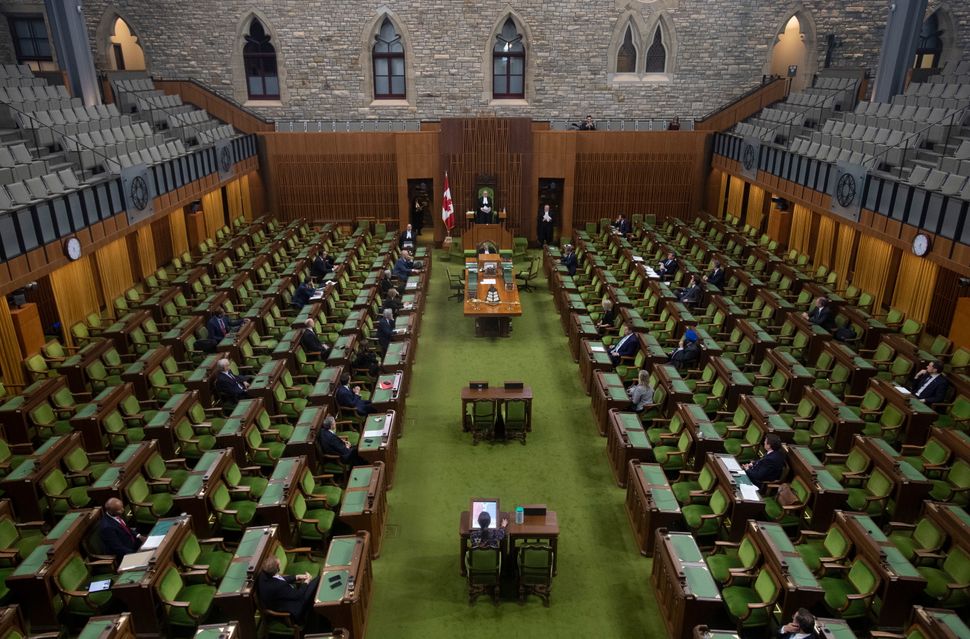
Academics and advocates from around the world have used this moment to urge political leaders to see the coronavirus pandemic as an opportunity to “save lives” and test a universal basic income.
With the economy unfurling at the mercy of the current COVID-19 public health crisis, the Canadian government has introduced new measures to get money directly into people’s pockets. It’s a live test of a kind of guaranteed basic income. Employment Minister Carla Qualtrough told the Canadian Press recently it could be a preview of a new normal.
“This could be the impetus to really, radically simplify how people access income support from the federal government,” she said.
The basics of basic income
It’s a concept of many names.
Guaranteed basic/liveable income is the idea that there should be a social welfare program in place to, like its name suggests, guarantee everyone a sufficient minimum to access the basic necessities of life such as food, clothing and shelter.
There are two ways a guaranteed minimum income can be transferred directly to individuals or couples.
One avenue is through a universal basic income, where everybody gets a cheque. This flat amount would be given to all citizens, regardless of their employment or financial situation.
The other option is a negative income tax. Eligibility is based on a person’s employment or financial situation. Families with no income are eligible for the maximum amount to reach a baseline minimum income. To implement this, governments would have to decide on a baseline income (for example, the market basket measure, which is Canada’s official poverty line) as a measure of minimum support. Any income above would be taxable. Anything below would be eligible for a top-up to meet that baseline level, similar to the Guaranteed Income Supplement for low-income seniors.
Guaranteed income for emergencies
The economic crisis caused by COVID-19 has forced countries to think on their feet — and to be open to putting cash into people’s pockets, quickly. In the U.S., the Trump administration has put together a $2-trillion stimulus package that includes one-time $1,200 payments to every American adult who earns less than $75,000, plus an additional $500 per child, to help get people financially through the pandemic.

Canada has promised a suite of targeted measures, including two kinds of direct payments: a top-up of its child benefit and the Goods and Services Tax credit to help low and modest income earners. A new Canada Emergency Response Benefit (CERB) has also been introduced as a safety net for impacted workers who are not eligible for employment insurance. It promises monthly, $2,000 cheques, for up to four months, to Canadians who’ve earned at least $5,000 in the previous year and have seen their income drop to zero because of the COVID-19 crisis. The money is taxable, reported as income and progressively taxed next year.
A senior official in the prime minister’s office told HuffPost Canada they favoured the CERB’s targeted approach because it allowed the government to give more money to those who need it most, rather than spread the cash thinly to everybody, including those whose incomes are unaffected by the pandemic. HuffPost is not identifying the official because they were not authorized to speak publicly on the topic.
Watch: Here’s who qualifies for Canada’s COVID-19 relief benefit. Story continues below.
One factor repeatedly cited by officials is the need to get cash out quickly and the fact the government has no database with every Canadian’s address.
Another factor was timing. There may come a time, one official said, when the government does decide to send money to those affected by the pandemic or not to help pump the economy. But right now, with mainstreet shopping sprees temporarily verboten and scores of businesses on hiatus until further notice — where would those with extra cash spend it?
‘I can’t stockpile,’ says ex-basic income recipient
When coronavirus panic shopping became a thing, Ashley was constantly reminded of not having the financial means to buy her own emergency reserve of food. The viral photos and videos of people hoarding groceries annoyed her. “I can’t stockpile,” she said. “Where’s my help?”
The single mother, who didn’t want her full name published because of concerns about the stigma of being on welfare, lives in subsidized housing in Hamilton, Ont. with her 13-year-old son. Diagnosed with post-traumatic stress disorder and generalized anxiety disorder, her income comes solely from the Ontario Disability Support Program (ODSP) cheques she gets at the end of each month. She is not eligible for the government’s new $2,000 monthly CERB payments. The Ontario government has promised new discretionary benefits for those on social assistance, but details are thin.
“There is really nothing available,” she said about COVID-19-related support for those on social assistance. “No increase in cheques either.”
She receives less than $21,000 annually. It takes careful budgeting to make sure she meets her basic needs and those of her autistic son. “There’s more month at the end of my money,” she joked over the phone.
Ashley was one of 4,000 participants in Ontario’s cancelled basic income pilot project launched by the previous provincial Liberal government. She qualified because she earned less than $34,000 annually and lived in Hamilton, one of the three regions researchers selected for the pilot. Couples qualified if they earned $48,000 or less, collectively.
Watch: Photographer chronicles scrapped basic income pilot. Story continues below.
Participants were given top-ups scaled to their income: The more you earned, the smaller your basic income cheque would be. Single people could earn up to an additional $16,989 per year. Couples were eligible for up to an extra $24,027. As a single participant on disability, Ashley received an extra $500 per month during the pilot. It was intended to run for three years.
By the pilot’s design, basic income cheques were reduced by 50 per cent for every dollar participants earned in employment income. You would be able to keep your hard-earned money, get a slimmer top-up, preserving the incentive to work. This was a remarkably different rubric to the one followed by Ontario Works, the province’s welfare program.
Under existing rules, adult welfare recipients are taxed 50 per cent on all earnings after the first $200 in employment income. The high taxation rate, according to anti-poverty advocates and social assistance recipients, leaves many feeling trapped.
“When I was on basic income I wasn’t using food banks,” Ashley said, adding that she wasn’t stressing about having enough money to buy bread. “My mental health went up. My morale went up ... I was actually shopping at the grocery store.”
The extra $500 that basic income put in her pocket every month gave her the financial peace-of-mind to choose nutritious foods.
Her son loves apples and bananas, so she prioritizes those items on her grocery list and other healthy foods because she believes a good diet will keep them out of the hospital. “I still do a lot of home-cooked meals where there’s chicken, rice and veggies,” she said. “There’s always salad and cucumbers in the house.”
Ashley found out about the pilot’s cancellation on Facebook.
“I was stressed out for months because I was worried that I wasn’t going to get reapproved for disability,” she said. “One month I had basic income and the next I didn’t.”
She had spent four years in college earning two diplomas in medical office administration and legal assisting, but was unable to get a job in those fields because employers wanted three to five years of experience for entry positions. So she took a customer care representative job at a call centre. She quit in 2016, just before the basic income pilot project started. Being repeatedly verbally harassed by angry customers over the phone led to a mental health decline, she explained.
After the basic income project ended, Ashley was reapproved for disability payments. She tried to get a job but couldn’t find another employer to hire her.
“One month I had basic income and the next I didn’t.”
- Hamilton resident Ashley
The government mistakenly sent her an extra disability cheque when she transitioned back to the program. Ashley has been pandemic planning on a slimmer cheque of about $1,400 after the monthly clawback. Her senior mother sometimes helped with extra groceries, but now that’s on hold because her mom is staying indoors.
Ashley is one of 13,000 people who rely on food banks every month in Hamilton. Her monthly disability cheque doesn’t cover everything.
She pays her bills, utilities and rent first. If it’s winter, heating is another high-priority payment. Hospital checkups for her and her son come with compounded taxi or bus expenses. If there’s an emergency or unexpected expense, it’s the grocery budget that gets cut so she can afford everything else. Some months, the food budget is trimmed so tight, she has to go to four food banks, where you can pick up three days’ worth per visit, to make sure there’s enough to eat.
And there are old student loans to repay.
“I’m sitting in this spot of limbo where no one really seems to care.”
- Ashley, single mother in Hamilton receiving ODSP
“I’ve been out of school for about six years and my student loan debt is still over $11,000,” she said. The bills keep coming and the interest keeps growing.
When her $1,400 cheque comes in at the end of March, she said she’ll have to choose between buying groceries and paying off her credit card bill. She doesn’t have enough to cover both. “I’m sitting in this spot of limbo where no one really seems to care,” she said.
“We’re drowning here.”
Poverty’s $13-billion imprint
During the 17 months the program existed, researchers at McMaster University found Ontario basic income participants, like Ashley, made a “noticeable impact on the use of health services.” There were “less frequent visits to health practitioners and hospital emergency rooms,” according to a March report. Nearly 80 per cent reported that their health improved while they received basic income payments.
On top of health improvements, participants reported their sense of self-worth increased and their outlook on life brightened. The extra money also allowed some to put in time and effort into finding different jobs. “The majority of those employed before the pilot reported working while they were receiving basic income. Many reported moving to higher paying and more secure jobs,” the report read.
An Ottawa-based non-profit Canada Without Poverty published a report a few years ago that estimated poverty “costs” provincial, territorial and the federal governments up to $13 billion annually, when health care, the criminal justice system and loss of productivity figures are factored.
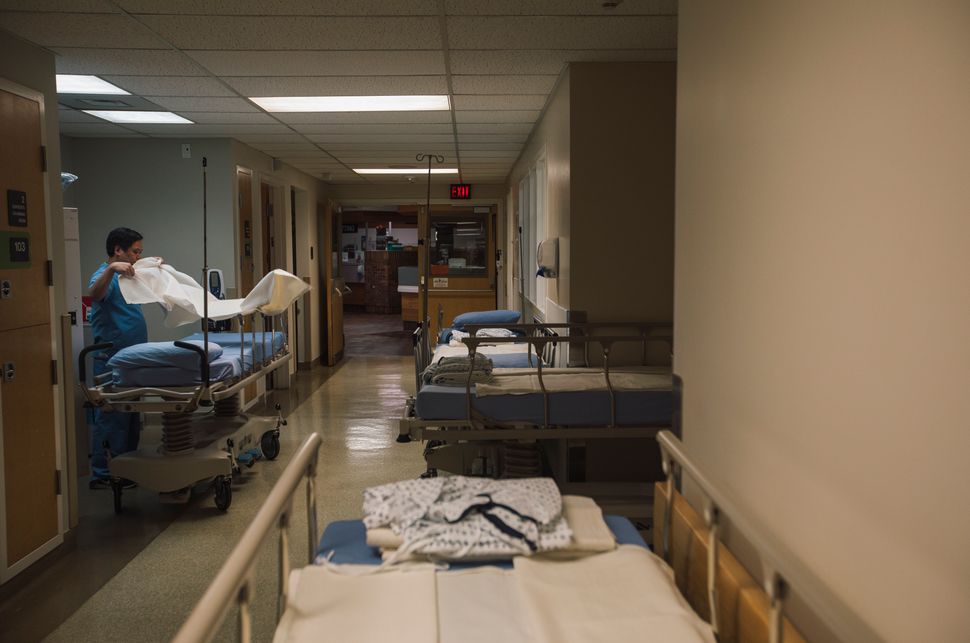
Despite countless studies and reports touting the merits of a basic income as an alternative to a myriad of social assistance programs, the idea continues to face stigma. Skeptics often turn to anecdotes, claiming income-topping cheques will kill the incentive to work. Some claim regular basic income payments will turn able-bodied low-income workers into “ski bums.”
This is a point that has former senator Segal cheesed.
“[There are people] who have talked themselves into believing that if you pay people to do nothing they will do nothing, and they will not work, where there isn’t a scintilla of evidence to back that up,” he said. “In fact, as you and I are talking on the phone, 70 per cent of the people who live beneath the poverty line in this country have a job. Some have more than one.”
Poverty and pandemic planning
There are more than 3.2 million people living in poverty, according to 2018 data from Statistics Canada. That’s 8.7 per cent of the country’s population. But poverty isn’t distributed equally across the country.
There is more poverty in rural communities. Indigenous children also live in poverty at a disproportionately higher level — as high as 35 per cent, double the national average. Lower-income families in Toronto and Vancouver are particularly vulnerable to swings in the economy, according to 2016 Statistics Canada. Poorer families in those two cities have about four dollars of debt for every dollar of after-tax income because mortgages are skewed higher in those real estate markets than the rest of the country, which increases household debt.
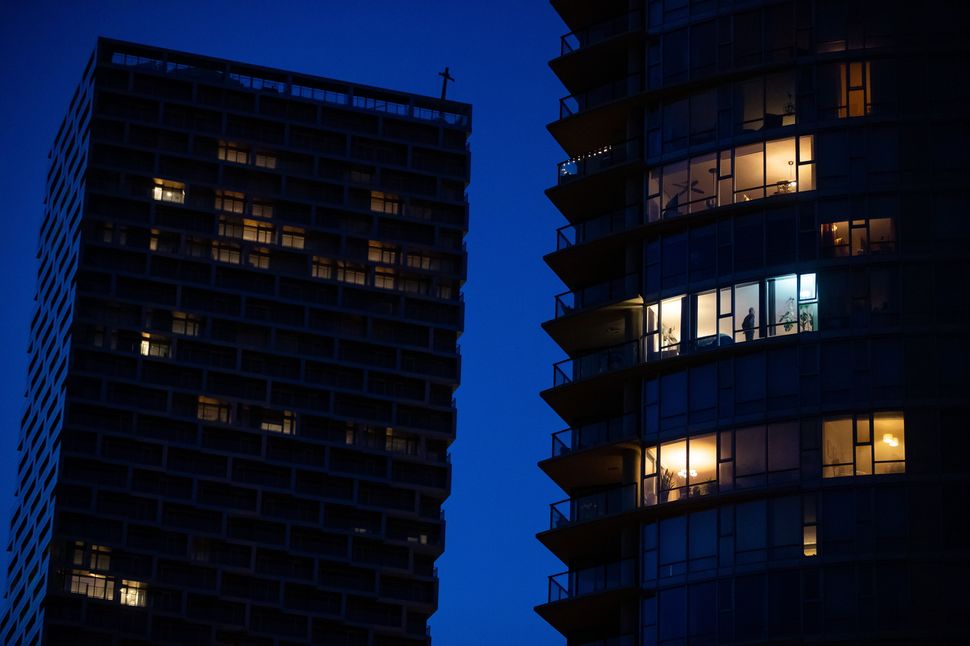
Tom Cooper, director of the Hamilton Roundtable for Poverty Reduction, thinks a universal basic income would have been a strong buttress to build resilience against the financial impact of the COVID-19 pandemic.
“We’ve been talking for years around the fact that people are only $200 away from not being able to make their needs. And now that reality, sadly, has come home to roost. We need to get money to people quickly.”
An Ipsos poll last year indeed showed that nearly half (48 per cent) of Canadians are less than $200 away from insolvency. It’s a statistic that policymakers will have to keep close to them as they try to build programs to stymie the economic impact of widespread social distancing.
New CERB payments could come as quick as 48 hours
Kevin Milligan, a professor at the University of British Columbia’s Vancouver School of Economics, said the government’s multi-pronged financial package is a bundle of policies that suggests the government is prioritizing expediency above all else right now.
It makes sense to increase the Canada Child Benefit (CCB) and GST tax credit, Milligan said, because those two databases are established and updated on a monthly and quarterly basis. It’s an easy way to get money into the pockets of people who may need it. The CCB is essentially basic income for people with kids, he said.
“This is as fast as the [government says it] can go within an existing system,” Milligan told HuffPost Canada.
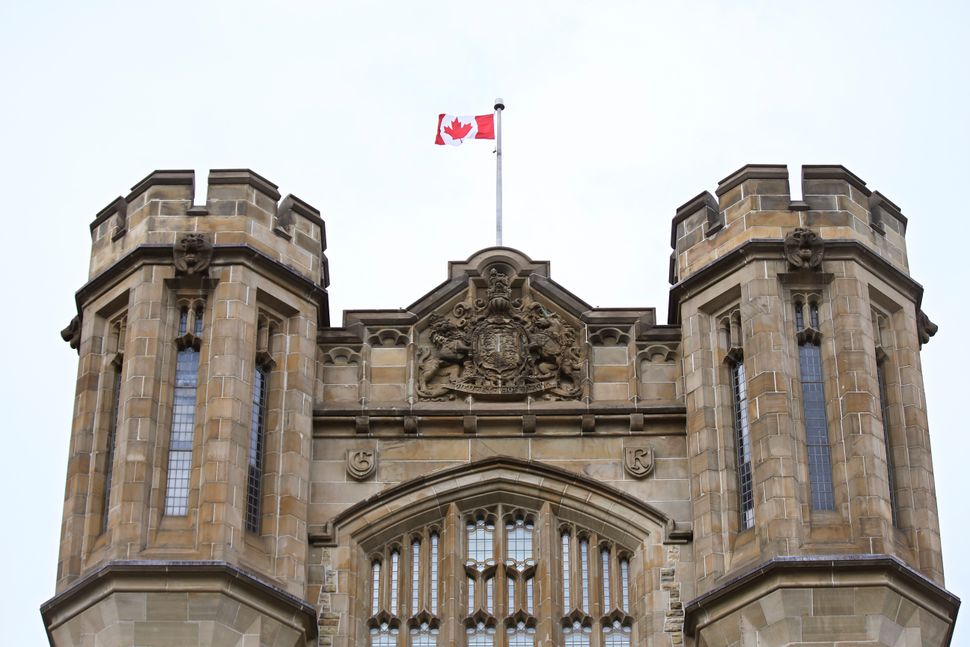
If the government were to design a new transfer, for example, with the idea of giving a $1,000 to every Canadian, a big challenge would be getting a database up and running with accurate information. “The hard part isn’t where do we get the money, [it’s] how do we design this thing,” he said. “The hard part is the mechanics of the government part.”
“Thirty-seven million Canadians, a thousand dollars each, that’s $37 billion,” Milligan said. “If you take that $37 billion and you target it to the middle and low earners that are getting the CCB and GST tax credit, you can give them more for the same budget.”
Within a week of the government’s initial COVID-19 relief package announcement, nearly a million people applied for employment insurance (EI), the official told HuffPost. That’s a significant increase compared to the 2008 financial crisis when Service Canada saw a peak of 35,000-40,000 EI requests in one week.
Sources say the decision to shift the program from an expanded version of employment insurance to a flat amount available to more people with fewer strings attached was made in part because the EI system was overwhelmed. Delivering the program through the CRA, which processes millions of tax returns each year, was seen to be more dependable. Tests are currently underway to gauge the CRA’s IT system’s ability to process and deliver millions of new claims and payments before the system goes live on April 6. The money will be retroactively available to March 15.
People who opt to receive the CERB through cheques should expect the first payment within 10 days. And, if everything goes smoothly, those who choose direct deposit could see money in their accounts as quickly as 48 hours after they file their application.
Four million people are expected to apply for the new federal COVID-19 emergency benefit, according to The Globe and Mail.
Renaissance idea for contemporary poverty
The idea of a guaranteed income has existed for more than 500 years. English philosopher Thomas More proposed the idea in his book Utopia when he likened the treatment of the poor by the wealthy to teachers who preferred to cane students over teaching them.
“Instead of inflicting these horrible punishments, it would be far more to the point to provide everyone with some means of livelihood, so that nobody’s under the frightful necessity of becoming first a thief and then a corpse,” More wrote.
This Renaissance idea found life in modern pilots launched all around the world. In Stockton, Calif., the 23 per cent poverty rate prompted the city to offer $500 debit cards to the city’s poorest.
Watch: The city giving away free money. Story continues below video.
Researchers in Finland, a country with a poverty rate of a fraction of a percentage point, found the economic benefits of a basic income were nominal, but researchers there acknowledged more money led to “clearly fewer problems related to health, stress, mood and concentration.” Early observations in Kenya’s long-term experiment involving nearly 200 villages show people spent the extra “free money” (approximately $40 CAD monthly) on savings and necessities such as fertilizer and extra food in their kids’ lunches.
Segal praises these radical efforts to help people, calling basic income the most “efficient, humane, non-stigmatizing” way to alleviate poverty.
“You don’t keep on doing the same thing time and time again hoping to produce another result because that’s the definition of insanity,” he said, of the ongoing maintenance of a matrix of social assistance programs in Canada. “You have to try something new.”
* * *
It was once said that the moral test of government is how that government treats those who are in the dawn of life, the children; those who are in the twilight of life, the elderly; and those who are in the shadows of life, the sick, the needy and the handicapped.
- Former U.S. vice-president Hubert Humphrey
* * *
Challenging situations in the past have paved the way to benefit programs we continue to see today.
An income tax was introduced after the First World War to help Canada pay for its war efforts. It was intended to be temporary, but then the government realized this new revenue stream could fund social programs. Old Age Security was one of those programs, designed to help boost the incomes of poor seniors who found themselves out of work with factories favouring younger employees, dependent on their children for support.
Employment insurance was introduced a year after the start of the Second World War. Memories of extreme poverty seen in the Depression years motivated Canada’s efforts to protect workers from temporary job loss.
Today, there are 55 programs designed to help low-income earners, families, and members of other vulnerable groups in Canada. Advocates have argued that quasi-basic income cheques such as Old Age Security and the Guaranteed Income Supplement, and the Canada Child Benefit could be collapsed into one cash-transfer program for efficiency’s sake.
According to the parliamentary budget officer (PBO), federal support for these 55 programs cost $56.8 billion in 2017-18. In a 2018 report, the PBO studied how much money it would take to implement a federal basic income, modelled after Ontario’s pilot project, to essentially eliminate poverty in Canada overnight.
The PBO found it would cost $76 billion to get a federal basic income program off the ground and running in its first year. After that, the net cost would be $44 billion annually. Bear in mind, these numbers were crunched at a time when a public health pandemic didn’t threaten the livelihoods of millions of people, which is the situation countless people are currently facing.
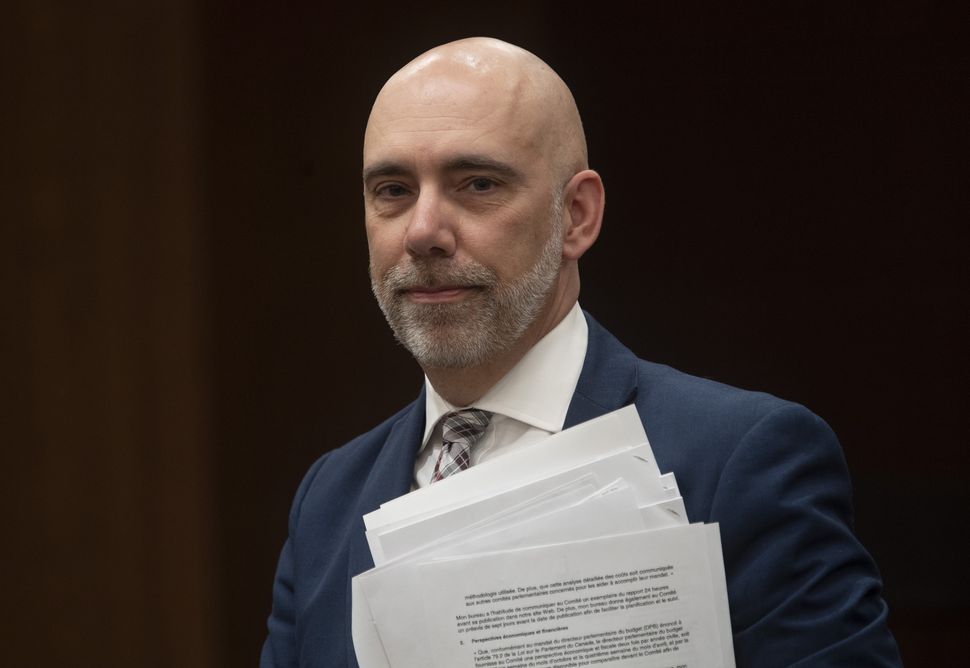
The PBO suggested if the federal and provincial governments worked together additional savings could be achieved. “This would replace some provincial transfers for low-income individuals and families including many non-refundable and refundable tax credits, thereby reducing its net cost.”
But now, due to the global pandemic, governments around the world are looking to get money to people quickly and directly and the idea of a basic income may become an easier sell to the public and to Parliament.
Call for new Senate study
In a speech in the upper chamber this February, Sen. Kim Pate urged her colleagues to give the idea a fair debate.
“We have made it harder and harder for people to get themselves out of poverty in this country,” Pate said, in an interview outside the Senate before Parliament’s suspension. Layers of eligibility requirements and technicalities have entrapped people in poverty, she said.
“Very few social workers went to school so they could police people’s morality and their income — and that’s what they end up doing mostly,” the lawyer and former executive director of the Canadian Association of Elizabeth Fry Societies said. She said they’re basically “figuring out whether someone deserves to get their social assistance cheque, [or] whether it should be clawed back.”
If it sounds a little bit like déjà vu, that’s because it is. Fifty years ago, a guaranteed annual income was first proposed by Canada’s Senate as a credible way of addressing poverty in the country. In the 1970s, it was piloted in Dauphin, Man., and temporarily eliminated poverty there. Basic income has never been implemented on a provincial or territorial, let alone national level.
Doctor says income is top concern he hears
Dr. Tim O’Shea has lived in Hamilton for 20 years. He’s worked with some of the city’s most marginalized residents, some who face homelessness, struggle with addiction and rely on provincial social assistance. Though the threat of the continued spread of the novel coronavirus is certainly on the minds of many, O’Shea said it’s not the No. 1 priority for many patients he deals with.
“Their top concern right now really is food security with the shutdown of a lot of feeding centres. Where they’re going to be; where they’re going to sleep; how can they socially distance from other people in a shelter setting.” The underlying concern to all that is income, he said.
Public health officials aren’t taking any chances. In Hamilton, non-essential programming at the Mission Services has been cancelled, and its East Hamilton Food Centre has been temporarily closed. Hamilton Out of the Cold, a community non-profit that provides free hot meals to the hungry across the city, has cancelled its volunteer-run breakfast and dinner programs to minimize the risk of COVID-19 community spread.
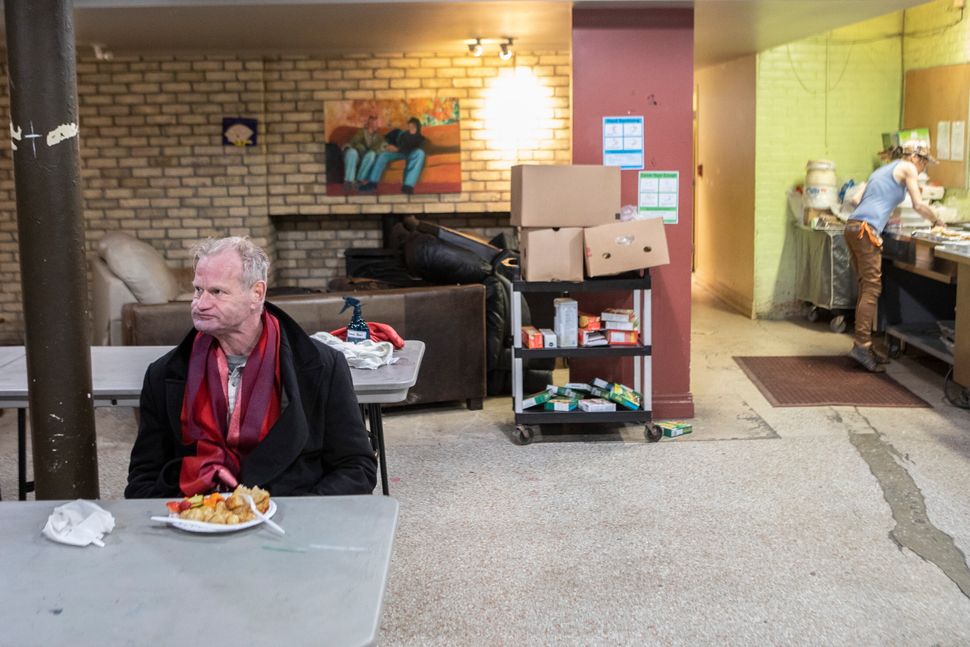
O’Shea, an associate professor at McMaster University’s department of medicine, said he supports the idea of a basic income to help society’s most vulnerable people.
“There’s good evidence that a universal basic income is beneficial to people’s health in general, outside of a pandemic. There’s certainly no reason to think that it wouldn’t be even more beneficial in a setting where there’s more income insecurity, more food insecurity like we’re experiencing now.”
In the long run, O’Shea believes a basic income could theoretically help offload preventable illnesses from an already taxed health-care system — one that likely prefers $7 sandwiches and soups to the avertable $1,000 health-care system combo that sometimes goes with it.
With files from Althia Raj